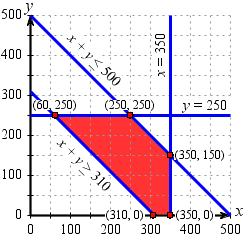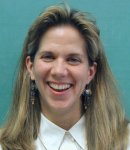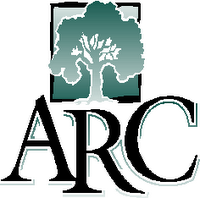




Welcome to a web log for students enrolled in classes taught by Professor Barcellos at American River College. (The opinions expressed herein belong to those who express them and are not official statements of either American River College or the Los Rios Community College District.)

 In some ways, Calculus III is a re-run of Calculus I (derivatives) and Calculus II (integrals). We are going to differentiate and integrate functions again, but this time in higher dimensions. Instead of limiting ourselves to functions of one variable, as we did in the past, we are going to deal with functions that have two or three (or more) variables. Calculus III will therefore involve familiar operation, but in unfamiliar contexts. Your basic differentiation and antidifferentiation skills will be employed in new and more realistic situations. In particular, physics students will recognize that many of our Calculus III theorems relate directly to discoveries in electromagnetism and the properties of gravitation.
In some ways, Calculus III is a re-run of Calculus I (derivatives) and Calculus II (integrals). We are going to differentiate and integrate functions again, but this time in higher dimensions. Instead of limiting ourselves to functions of one variable, as we did in the past, we are going to deal with functions that have two or three (or more) variables. Calculus III will therefore involve familiar operation, but in unfamiliar contexts. Your basic differentiation and antidifferentiation skills will be employed in new and more realistic situations. In particular, physics students will recognize that many of our Calculus III theorems relate directly to discoveries in electromagnetism and the properties of gravitation.




 It may seem greedy to complain that we had only a year to bid farewell to Sharon, but I'm going to complain anyway. We have been robbed of a dear friend, a cherished colleague, and a great teacher. We are weakened in every way by her loss. The entire mathematics department—the whole college—is in mourning. I can scarcely even begin to imagine the magnitude of the grief among her family members.
It may seem greedy to complain that we had only a year to bid farewell to Sharon, but I'm going to complain anyway. We have been robbed of a dear friend, a cherished colleague, and a great teacher. We are weakened in every way by her loss. The entire mathematics department—the whole college—is in mourning. I can scarcely even begin to imagine the magnitude of the grief among her family members.
I want you all to know, that I have always been so proud to be a part of this department. This is not some PR statement. I am always bragging about what a great job I have and what fascinating people I work with from faculty, to clerical and management staff, and all the other support staff—tutors, IA's, computer techs, ... Teaching gave me a sense of satisfaction that I am desperately going to miss. I loved those “Ohhhhh!” moments from students, and I told them that those were what I went into teaching for. I will miss the camaraderie in the halls, the razzing at department meetings, Brother Oliver's on Fridays, department parties, walking to class with whoever, my new little decorated office with a clean bathroom down the hall!, and so much more. You have been my family for 17 years, and I will miss all of you. But I know you will continue to make this department one of the best places for students to come and learn what we all know is the beauty of math.
I am forever thankful to have been a part of that, and I love you all dearly.
—Sharon
 This term I am teaching four classes covering three courses: two sections of Math 342 (Business Applications Math) and one section each of Math 350 (Calculus for the Life and Social Sciences I) and Math 370 (Precalculus). I've posted the syllabi as pdfs on my public directory (see the sidebar for the link). Welcome. If you have any questions or if you are doing the assignments in Quiz 0, you can e-mail me by clicking the link in the sidebar.
This term I am teaching four classes covering three courses: two sections of Math 342 (Business Applications Math) and one section each of Math 350 (Calculus for the Life and Social Sciences I) and Math 370 (Precalculus). I've posted the syllabi as pdfs on my public directory (see the sidebar for the link). Welcome. If you have any questions or if you are doing the assignments in Quiz 0, you can e-mail me by clicking the link in the sidebar.
 In the second figure, I've drawn in the lines y = 13 and y = 27 to mark off the low and high points of the velocity curve. If the object were traveling only 13 ft/sec for 15 sec, then the distance it travels would be just (13 ft/sec)(15 sec) = 195 ft. That's the area of the blue rectangle that represents a lower bound on the area under the red curve. On the other hand, if the object always traveled 27 ft/sec (the upper bound on velocity), then the distance traveled would be (27 ft/sec)(15 sec) = 405 ft.
In the second figure, I've drawn in the lines y = 13 and y = 27 to mark off the low and high points of the velocity curve. If the object were traveling only 13 ft/sec for 15 sec, then the distance it travels would be just (13 ft/sec)(15 sec) = 195 ft. That's the area of the blue rectangle that represents a lower bound on the area under the red curve. On the other hand, if the object always traveled 27 ft/sec (the upper bound on velocity), then the distance traveled would be (27 ft/sec)(15 sec) = 405 ft. We have now figured out that the distance traveled is somewhere between 195 ft and 405 ft. That's a pretty broad range, to be sure, but we could make it better by using less extreme bounds. For example, we could try drawing triangles inside the humps of the cosine curve to estimate the area we left off while computing the lower bound. That should help. At some point, though, we would probably want something better than computing lots of different estimates. When we have the right calculus tools available, we'll be able to show that the exact distance traveled is 300 + 7 sin 15 ≈ 304.55 ft.
We have now figured out that the distance traveled is somewhere between 195 ft and 405 ft. That's a pretty broad range, to be sure, but we could make it better by using less extreme bounds. For example, we could try drawing triangles inside the humps of the cosine curve to estimate the area we left off while computing the lower bound. That should help. At some point, though, we would probably want something better than computing lots of different estimates. When we have the right calculus tools available, we'll be able to show that the exact distance traveled is 300 + 7 sin 15 ≈ 304.55 ft.
 M. C. Escher's work will be on display at the Crocker Art Museum in Sacramento from June 10 to September 3 of this year. M. C. Escher: Rhythm of Illusion was originally organized by the Portland Art Museum and features 70 examples of the artist's surreal art. Many of Escher's drawings are familiar to college students, especially since they are so commonly displayed in the offices and classrooms of math teachers.
M. C. Escher's work will be on display at the Crocker Art Museum in Sacramento from June 10 to September 3 of this year. M. C. Escher: Rhythm of Illusion was originally organized by the Portland Art Museum and features 70 examples of the artist's surreal art. Many of Escher's drawings are familiar to college students, especially since they are so commonly displayed in the offices and classrooms of math teachers.There is an official M. C. Escher website where interested parties can find many useful resources related to the artist, including a detailed picture gallery.
While reproductions of his work can sometimes seem cold and sterile, the actual prints have warmth, depth and texture that make them more sensual and personal than one might expect. One of the purposes of the show, [Crocker curator William] Breazeale says, is to demonstrate what a difference there is between reproductions and the real thing.

